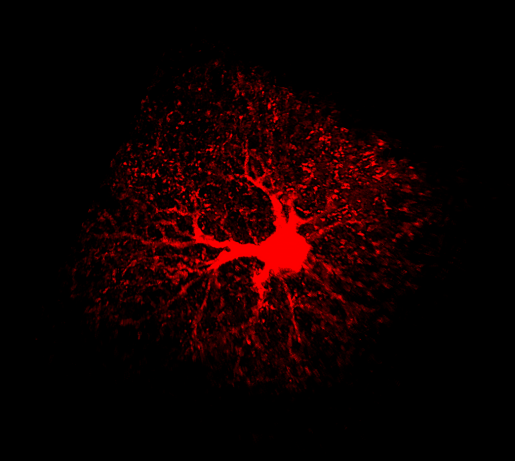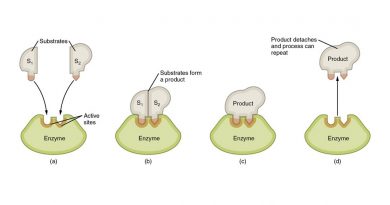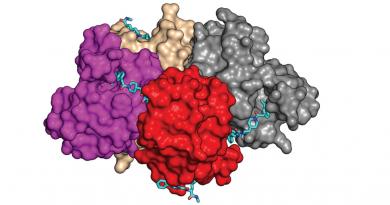The unexpected functional diversity of reactive astrocytes
When the brain is injured or diseased astrocytes are the first to respond. They become reactive and play roles that can be both beneficial and deleterious, but little is known about how these diverse responses to injury are regulated.

In his lab at Baylor College of Medicine, Dr. Benjamin Deneen, professor of neurosurgery and the Center for Stem Cell and Regenerative Medicine, has long been studying astrocytes, the most abundant cells in the brain. In this publication, he and his colleagues reported surprising discoveries regarding both the generation and activity of the first responders to brain injury.
“Reactive astrocytes are associated with most forms of neurological disorders, from acute injury to degeneration, but their contributions to disease are only now coming to light,” Deneen said.

In the current study, Deneen and his colleagues focused on identifying a regulator of reactive astrocytes. They looked into nuclear factor I-A (NFIA), a known regulator of astrocyte development, and investigated whether it also was involved in the generation and regulation of reactive astrocytes.
Unexpected results
First, they determined that NFIA is abundant in human pediatric and adult reactive astrocytes found in a host of neurological injuries. Then, to explore the role NFIA plays in the response of reactive astrocytes to injury, the researchers turned to mouse models. They generated mice in which NFIA was specifically eliminated in astrocytes, and compared the reactive astrocyte response of these NFIA-deficient mice to that of mice with NFIA, after different types of neurological injury.
“The results were surprising,” said Deneen, who holds the Dr. Russell J. and Marian K. Blattner Chair and is a member of the Dan L Duncan Comprehensive Cancer Center at Baylor. “Until now, it was thought that, regardless of the type of injury or where it occurred in the central nervous system, reactive astrocytes would respond in the same way. Knocking out NFIA allowed us to uncover a previously unknown layer of functional diversity in reactive astrocytes.”
When white matter injuries occurred in the spinal cord of NFIA-deficient mice, reactive astrocytes were generated and migrated toward the injury, but were not able to remodel the injured blood brain barrier as well as the reactive astrocytes of normal mice did. Consequently, the white matter was not repaired.
But when the researchers tested the response to a different form of injury in another region of the central nervous system – a stroke in the cerebral cortex – they observed something different. While normal mice (with NFIA) responded to stroke by producing reactive astrocytes that migrated toward the injury to repair the bleeding, NFIA-deficient mice did not generate reactive astrocytes and the injury was not healed. In both cases, in the spinal cord and in the cerebral cortex, the injury was not properly repaired, but the underlying reasons were different in each case.
“These findings suggest that NFIA’s function in reactive astrocytes is dependent upon the type of injury and brain region in which the injury occurs. In the cerebral cortex, NFIA is crucial for making reactive astrocytes, while in the spinal cord NFIA is important for sealing off leaking blood vessels. These results hint at an extensive reservoir of reactive astrocyte responses that vary according to form and location of injury,” Deneen said.
In addition, the researchers began to define the molecular mechanisms underpinning the generation of reactive astrocytes. They found that NFIA directly regulates the production of thrombospondin 4, an essential regulator of the generation of reactive astrocytes that had been previously identified in the lab of co-author Dr. Chay T. Kuo, associate professor of cell biology and neurobiology at Duke University.
Although our study was conducted in mice and more research is needed, we think our findings may reflect what occurs in people, as NFIA also is abundantly present in reactive astrocytes in both pediatric and adult neurological injuries,” Deneen said.
“We also are interested in investigating the role NFIA plays in reactive astrocytes involved in neurodegenerative diseases, such as Alzheimer’s and Parkinson’s disease. It’s possible it has a completely different set of functions in these conditions,” Deneen said.
The study appears in The Journal of Clinical Investigation.
Other contributors of this work include Dylan Laug, Teng-Wei Huang, Navish A. Bosquez Huerta, Yu-Szu Huang, Debosmita Sardar, Joshua Ortiz, Jeffrey C. Carlson, Benjamin R. Arenkiel, Carrie A. Mohila, Stacey M. Glasgow and Hyun Kyoung Lee. The authors are affiliated with one or more of the following institutions: Baylor College of Medicine, Texas Children’s Hospital, Duke University and the University of California San Diego.
This work was supported by grants from the National Multiple Sclerosis Society (RG-1501-02756 and FG-1607-25417), the National Institutes of Health (NIH) (NS096096 and S071153), the National Heart, Lung, and Blood Institute (NHLBI), NIH (T32-HL902332) and the David & Eula Winterman Foundation MS Research Endowment.



